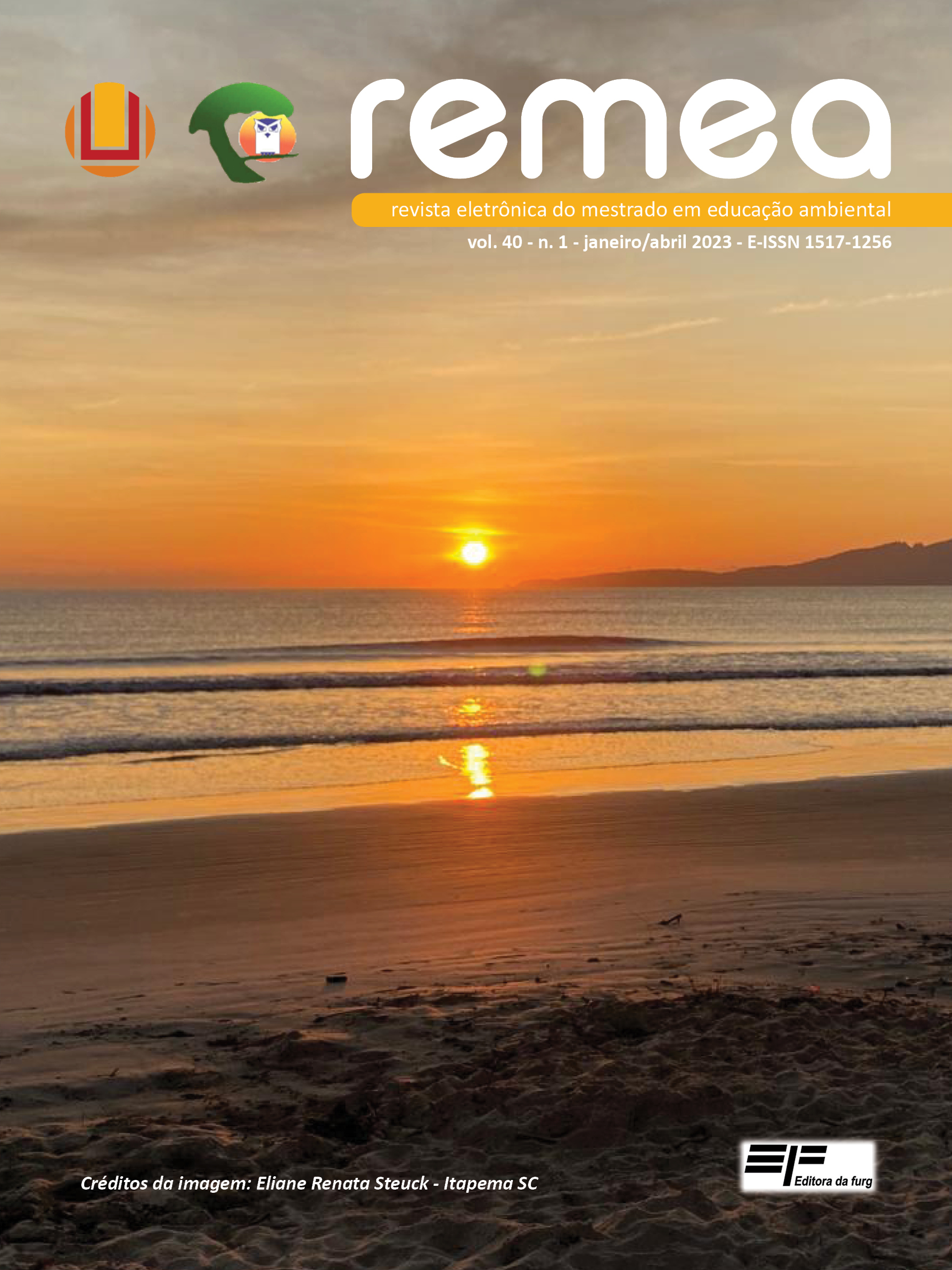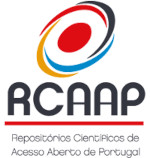Qualidade ambiental de edificações de ensino: uma ferramenta educativa para reflexão
DOI:
https://doi.org/10.14295/remea.v40i1.13435Keywords:
arquitetura, edificações de ensino, qualidade ambientalAbstract
In an educational building, the environmental quality of spaces has an impact on the well-being of its users and on the performance of students and employees. However, information on this topic is often too technical and complex. In this sense, the objective of the research, which culminated in this article, was to develop a tool that is easy to access and apply, based on the study of the characteristics of sustainable architecture and on existing environmental assessment indicators such as LEED and AQUA. The tool was applied in educational institutions in the cities of Ilhéus, Itabuna and Uruçuca-BA and can be used in other educational institutions, contributing to the reflection of its users about the perception of sustainability in these buildings and the democratization of such knowledge.
Downloads
References
ABERGEL, Thibaut et al. 2018 Global Status Report: Towards a Zero-Emission, Efficient, and Resilient Buildings and Construction Sector. Global Alliance for Buildings and Construction. 2018. Disponível em: <https://www.worldgbc.org/sites/default/files/2018%20GlobalABC%20Global%20Status%20Report.pdf> Acesso em 04/06/2020.
ANDRADE, Francisco de Carvalho Dias de. Uma poética da técnica: a produção da arquitetura vernacular no Brasil. Tese (Doutorado em História) - Instituto de Filosofia e Ciências Humanas, Universidade Estadual de Campinas, Campinas, SP, 2016.
ANTUNES, Lucas Niehuns; GHISI, Enedir. POTENCIAL DE ECONOMIA DE ÁGUA E ENERGIA EM EDIFICAÇÕES ESCOLARES. Anais do 5º Simpósio sobre Sistemas Sustentáveis. UFRGS, 2019.
BRASIL, Paula de Castro; SILVA, Juliana Christiny. Impactos da arquitetura escolar
na qualidade do ensino brasileiro. Conhecimento & Diversidade, v. 10, n. 21, p. 187-197, 2018.
CAMILLIS, Patrícia Kinast de. Organizando com barro: a bioconstrução como prática de cooperação. Tese (Doutorado em Administração) – Universidade Federal do Rio Grande do Sul, Porto Alegre, 2016.
CARVALHO, Isabel Cristina de Moura. Educação ambiental e a formação do sujeito
ecológico. São Paulo: Cortez, 2017.
DA SILVA, Carmen Lúcia Gomes; TAVEIRA, Flavia Giangiulio. POR QUE FAZER ESCOLAS SUSTENTÁVEIS? Revista Campo do Saber, v. 2, n. 2, 2016.
DONOVAN, Kevin; GKARTZIOS, Menelaos. Architecture and rural planning: Claiming the Vernacular. Land Use Policy, v. 41, p. 334-343, 2014. DOI: http://dx.doi.org/10.1016/j.landusepol.2014.06.013.
DU PLESSIS, Chrisna. Agenda 21 for Sustainable Construction in Developing Countries: a discussion document. CSIR Building and Construction Technology, Pretoria, 2002.
DU PLESSIS, Chrisna. A strategic framework for sustainable construction in developing countries. Construction management and economics, v. 25, n. 1, p. 67-76, 2007
DURAN, Sergi Costa. Architecture and Energy Efficiency. Barcelona: FKG, 2011.
ELETROBRAS. Sobre o Procel. Disponível em: <https://www.eletrobras.com/>. Acesso em out. 2018.
EL TUGOZ, Jamila; et al. Captação e aproveitamento da água das chuvas: o caminho para uma escola sustentável. Revista de gestão ambiental e sustentabilidade, v. 6, n. 1, p. 26-39, 2017.
FORD, Alan. Designing the Sustainable School. Austrália: The Images Publishing Group Pty Ltd, 2007.
FOSSATI, Michele; ROMAN, Humberto Ramos; SILVA, Vanessa G. Metodologias para avaliação ambiental de Edifícios: uma revisão bibliográfica. IV SIBRAGEC/I ELAGEC. Porto Alegre, 2005.
FUNDAÇÃO VANZOLINI E CERWAY. Guia Prático AQUA-HQE™ - Edifícios em Operação – Edifício Sustentável - Versão de 5 de janeiro de 2017. São Paulo: Fundação Vanzolini, 2017
GELFAND, Lisa. Sustainable school architecture: Design for elementary and secondary schools. John Wiley & Sons, 2010.
GILBERT, Richard et al. Sustainable transportation performance indicators (STPI). Transportation Research Board (TRB), CD ROM, v. 2003, 2003.
GUY, Simon; FARMER, Graham. Reinterpreting sustainable architecture: the place of technology. Journal of Architectural Education, v. 54, n. 3, p. 140-148, 2001.
KATS, Gregory. Greening America’s Schools. American Federation of Teachers, et al. Capital E, 2006.
KIBERT, Charles J. Sustainable Construction: Green Building Design and Delivery, 2ª Ed., New Jersey: John Wiley & Sons, Inc, 2013.
KYLILI, Angeliki; FOKAIDES, Paris A.; JIMENEZ, Petra Amparo Lopez. Key Performance Indicators (KPIs) approach in buildings renovation for the sustainability of the built environment: A review. Renewable and Sustainable Energy Reviews, v. 56, p. 906-915, 2016. DOI: 10.1016/j.rser.2015.11.096
KOWALTOWSKI, Doris CCK. Arquitetura escolar: o projeto do ambiente de ensino. Oficina de textos, 2011.
LAMBERTS, Roberto; DUTRA, Luciano; PEREIRA, Fernando O. R. Eficiência Energética na Arquitetura. 3ª Ed. São Paulo: ELETROBRAS/PROCEL, 2014.
MANZANO-AGUGLIARO, Francisco et al. Review of bioclimatic architecture strategies for achieving thermal comfort. Renewable and Sustainable Energy Reviews, v. 49, p. 736-755, 2015.
MENDELL, Mark J.; HEATH, Garvin A. Do indoor pollutants and thermal conditions in schools influence student performance? A critical review of the literature. Indoor air, v. 15, n. 1, p. 27-52, 2005.
NASCIMENTO, Luna Catrina Pontes. O conforto térmico de áreas escolares: análise da vegetação por meio do ENVI-met. IV Congreso latinoamericano de simulación en edíficios. Mendonza, 2019
NICODEMO, M. L. F.; PRIMAVESI, O. Por que manter árvores na área urbana? Embrapa Pecuária Sudeste - Documentos (INFOTECA-E), 2009.
OLIVER, Paul. Built to meet needs: cultural issues in Vernacular Architecture. Oxford: Elsevier LTDA, 2006.
PUTEH, Marzita et al. Thermal comfort in classroom: constraints and issues. Procedia-Social and Behavioral Sciences, v. 46, p. 1834-1838, 2012.
SHISHEGAR, Nastaran; BOUBEKRI, Mohamed. Natural light and productivity: Analyzing the impacts of daylighting on students’ and workers’ health and alertness. In: Proceedings of the International Conference on Health, Biological and Life Science (HBLS-16), Istanbul, Turkey. 2016. p. 18-19.
SOUZA, Larissa Negris de. Arquitetura escolar, parâmetros de projeto e modalidades de aprendizagem. 190fl. Dissertação (Mestrado em Arquitetura, Tecnologia e Cidade) – Faculdade de Engenharia Civil, Arquitetura e Urbanismo da Unicamp, Campinas, 2018.
SUZER, Ozge. A comparative review of environmental concern prioritization: LEED vs other major certification systems. Journal of environmental management, v. 154, p. 266-283, 2015.
USGBC. LEED v4 para OPERAÇÃO E MANUTENÇÃO DE EDIFÍCIOS. Guia de Referência. 116p. Atualizado em 1° de outubro de 2014.
VELLINGA, Marcel. The End of the Vernacular: Anthropology and the Architecture of the Other. Etnofoor, v. 23, n. 1, p. 171-192, 2011.
VIEIRA, Luciane Alves; BARROS FILHO, Mauro Normando. A emergência do conceito de Arquitetura Sustentável e os métodos de avaliação do desempenho ambiental de edificações. REVISTA HUM@NAE, v. 4, n. 1, 2012. Disponível em <http://humanae.esuda.com.br/index.php/humanae/article/view/55>. Acesso em 30 abr. 2020.
Downloads
Published
How to Cite
Issue
Section
License

This work is licensed under a Creative Commons Attribution-NonCommercial-ShareAlike 4.0 International License.










